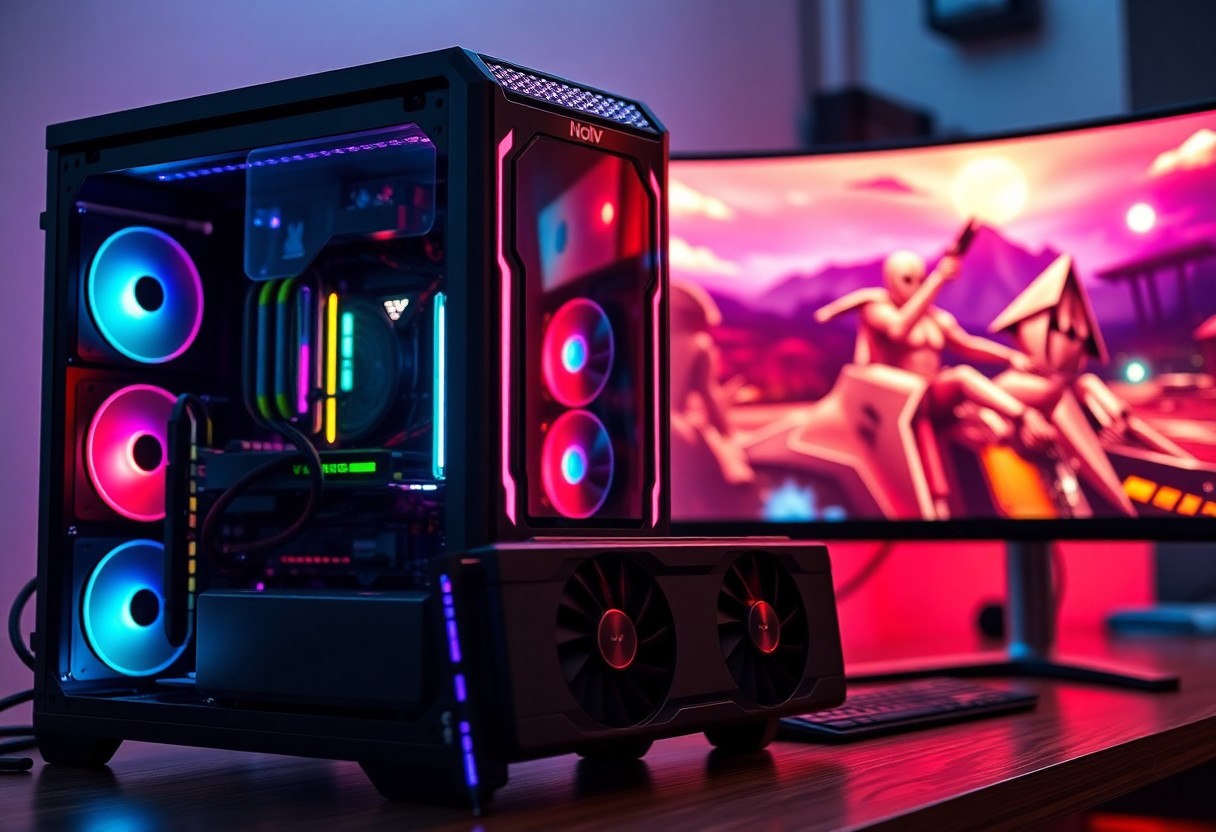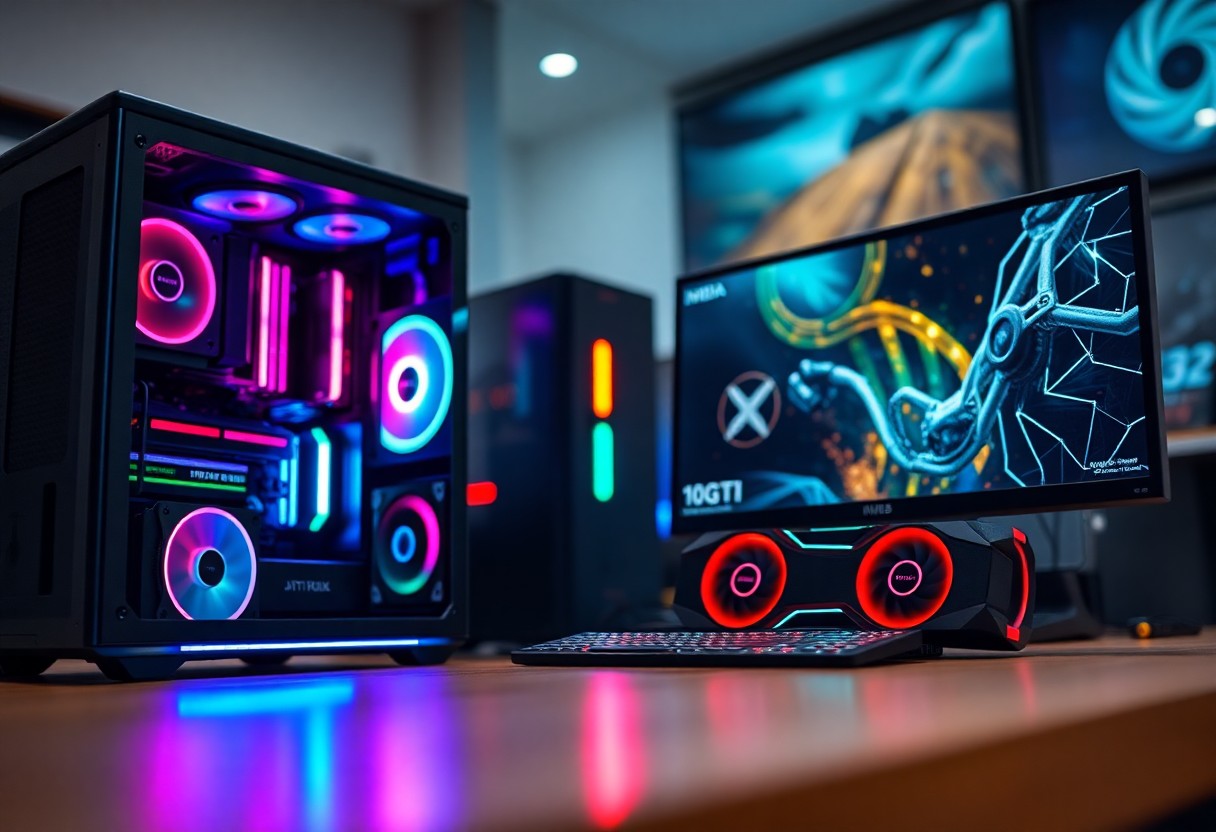PC Bottleneck Calculator
i7 7700k users often wonder if their processor can handle the powerful 1080ti without significant performance limitations. Understanding bottlenecking is vital for optimizing your gaming or productivity experience. If you pair your i7 7700k with a 1080ti, you may encounter situations where your CPU might limit the GPU’s full potential, particularly in CPU-intensive games or applications. This post will guide you through identifying potential bottlenecks in your setup, ensuring you make the most of your hardware while keeping your performance in check.
Key Takeaways:
- I7 7700K Performance: The Intel i7 7700K can handle the processing demands of a 1080 Ti effectively, making it a solid choice for gaming.
- Bottlenecking Behavior: Under certain conditions, especially in CPU-intensive games, the i7 7700K may exhibit bottlenecking with the 1080 Ti, leading to less optimal performance.
- Resolution Impact: At higher resolutions (1440p or 4K), the potential bottlenecking issues lessen since the GPU workload increases, allowing the 1080 Ti to shine.
Understanding Bottlenecks
While gaming and computer performance are often hampered by the term “bottleneck,” understanding it is important for optimizing your setup. A bottleneck occurs when one component of your system limits the performance potential of the others, leading to suboptimal functionality in games and applications. Identifying and addressing these bottlenecks allows you to enhance your overall performance.
Definition of Bottleneck
Above all, a bottleneck is a point in a system where the flow of data is restricted or slowed down. In gaming PCs, it typically refers to the mismatch between processing power and rendering capabilities, which can lead to lower frame rates and diminished performance.
Factors Contributing to Bottlenecks
Bottlenecks emerge from several critical factors that impact your gaming experience. They include:
- CPU performance – A less powerful CPU can limit your GPU’s potential.
- GPU capability – An aging or entry-level GPU struggles with new game graphics.
- RAM speed – Insufficient or slow RAM can hinder data processing.
- Thermal throttling – Overheating components can reduce performance.
Any of these elements can lead to significant performance issues in your gaming experience.
Bottlenecks can vary from one setup to another, and analyzing your own system can help identify problem areas. For example:
- Resolution settings – Higher resolutions demand more from your GPU.
- Game optimization – Some titles are more CPU-intensive than others.
- Power supply quality – A weak power supply may limit component performance.
- Driver updates – Updated drivers can improve performance.
Any oversight in these factors can result in noticeable bottlenecks, affecting your gaming enjoyment and system performance.
Overview of the I7 7700k
Assuming you’re considering the Intel I7 7700k for your gaming or productivity needs, it’s important to understand its place in the modern CPU landscape. Launched in early 2017, this processor is still recognized for its overclocking capabilities and strong single-core performance, making it a popular choice among gamers and content creators alike.
Specifications and Features
Before stepping into its performance, it’s necessary to take a look at the specifications and features of the I7 7700k. This quad-core processor boasts a base clock speed of 4.2 GHz and can turbo boost up to 4.5 GHz. It also comes with 8 threads, 8 MB of Intel Smart Cache, and supports DDR4 memory up to 2400 MHz.
Performance Benchmarks
Around various benchmarks, the performance of the I7 7700k has shown satisfactory results, especially in gaming scenarios where single-core performance is of the essence. In many contemporary titles, it continues to provide respectable frame rates, though its limitations become more apparent when paired with high-end GPUs like the 1080ti.
Further analysis reveals that while the I7 7700k has been a reliable performer, it may struggle to keep up with higher-end graphics cards in more demanding titles. You may notice that in a 1080p resolution, the CPU can still deliver smooth gameplay; however, at 1440p or 4K, the potential for bottlenecking arises as the GPU demands increase. If you intend to maximize your system’s capabilities, understanding these benchmarks will help you make an informed decision about whether the I7 7700k is right for you, especially in combination with a powerful GPU.
Overview of the 1080 Ti
After its release, the NVIDIA GeForce GTX 1080 Ti quickly became a favorite among gamers and enthusiasts. This powerhouse graphics card offers impressive performance, handling demanding games at high settings with ease. Your gaming experience can be significantly enhanced with the 1080 Ti, providing stunning visuals and smooth frame rates, making it a solid choice for high-resolution gaming.
Specifications and Features
Behind its remarkable performance, the GTX 1080 Ti boasts a 3584 CUDA core architecture, a base clock speed of 1480 MHz, and 11GB of GDDR5X memory. Additionally, it supports advanced technologies such as NVIDIA Ansel, G-Sync, and DirectX 12, enhancing your gaming experience further. The card’s robust power consumption and thermal management features ensure optimal performance during intense gaming sessions.
Performance Benchmarks
Along with its impressive specifications, the GTX 1080 Ti delivers outstanding performance benchmarks across various gaming titles. It consistently outperforms its predecessors, often achieving 60+ FPS at 1440p and maintaining high frame rates even at 4K resolution. This makes the 1080 Ti an excellent choice for gamers who demand top-tier graphics without compromising on performance.
At its peak, the GTX 1080 Ti showcases its capabilities in benchmark tests by handling graphically demanding games such as Battlefield 1, achieving over 100 FPS at ultra settings. In AAA titles, it maintains performance while providing realistic visuals, ensuring your gaming experience feels immersive. However, be cautious about potential heat output and power requirements, as it’s necessary to have a robust cooling solution and power supply to utilize its full potential effectively.

Analyzing the Bottleneck Scenario
All systems have their limits, and understanding the bottleneck scenario between the Intel i7 7700K and the Nvidia 1080Ti is important for optimizing performance. While both components are powerful, you may experience performance issues if one outpaces the other or if they aren’t well-matched for your gaming needs. Identifying whether your setup is being held back by the CPU or GPU can help you make informed decisions about upgrades or adjustments.
Gaming Performance
Gaming performance often depends heavily on the synergy between your CPU and GPU. The i7 7700K handles most games effortlessly, but with a high-end card like the 1080Ti, you might encounter instances where the CPU struggles to keep up, especially in CPU-intensive titles. This can lead to dips in frame rates, affecting your overall gaming experience.
CPU-GPU Balance
Across various gaming scenarios, achieving a balanced CPU-GPU relationship is vital. If your CPU is frequently maxing out while your GPU is underutilized, you risk losing performance potential. The ideal setup ensures that both components work harmoniously, allowing you to harness the full capabilities of your 1080Ti. Consider that the i7 7700K may bottleneck in certain scenarios, particularly in games that require higher single-thread performance, resulting in lower than expected frame rates and an unoptimized gaming experience.
The balance between your CPU and GPU should be a consideration for any gamer. The i7 7700K paired with a 1080Ti can deliver impressive performance in many games, but if you’re pushing high resolutions or trying to maximize settings in CPU-intensive titles, you may notice the CPU becoming a limiting factor. Aim to monitor your system’s performance, ensuring that your CPU is not perpetually at its limit while the GPU sits idle. This fine-tuning will help you achieve the best performance possible and make your gaming setup truly shine.
Solutions to Mitigate Bottlenecks
Your gaming experience can significantly improve by addressing bottlenecks between your i7 7700k and GTX 1080 Ti. Solutions range from hardware upgrades to software optimizations that efficiently utilize your existing resources. By implementing these strategies, you can enhance performance and ensure smoother gameplay, maximizing your investment in high-end components.
Hardware Upgrades
Behind every optimized system is the potential for hardware upgrades that can elevate your performance. Consider investing in a more powerful CPU, increasing RAM, or opting for faster storage solutions. These improvements can significantly reduce strain on your i7 7700k and ensure your GTX 1080 Ti runs at its full potential, offering you a better overall gaming experience.
Software Optimizations
Beside upgrading hardware, software optimizations play a vital role in mitigating bottlenecks. You can fine-tune settings in games and adjust your system configurations to gain performance benefits. This includes prioritizing resources effectively and ensuring your drivers and software are up to date.
Consequently, focusing on software optimizations can lead to notable performance enhancements without additional costs. By leveraging background resource management and tweaking graphics settings for balance, you can significantly improve frame rates and overall responsiveness. Additionally, regularly updating drivers ensures your hardware communicates efficiently, decreasing potential lags. Together, these practices can create a smoother gaming experience while maintaining the longevity of your expensive components.
Future-Proofing Your Setup
Despite the impressive performance of both the i7 7700k and the 1080 Ti, future-proofing your setup is crucial if you wish to keep up with emerging technologies and gaming demands. Investing in components that can seamlessly handle next-gen graphics and processing requirements will extend the lifespan of your gaming rig. This may involve strategically planning upgrades to maintain optimal performance and prevent obsolescence.
Considering Newer CPUs
CPUs have advanced significantly since the launch of the i7 7700k. Options like AMD’s Ryzen 5000 series or Intel’s 12th Gen Alder Lake chips can provide substantial performance boosts. These newer processors offer enhanced architectures and multi-threading capabilities, making them excellent investments for modern gaming and productivity tasks.
Evaluating GPU Options
About your GPU, it’s crucial to consider more recent models. With the release of NVIDIA’s RTX series, you can experience improved ray tracing and DLSS technology. Upgrading to a modern GPU not only enhances your gaming experience but also ensures compatibility with future titles that demand higher graphical fidelity.
Considering an upgrade means weighing your current performance against potential gains. A newer GPU can provide faster rendering times, improved textures, and support for real-time ray tracing. However, these upgrades often come with a high price tag, so evaluate your budget and system needs carefully. Select a GPU that not only meets your immediate requirements but also positions you well for upcoming gaming advancements.
Summing up
Following this, you should understand that pairing an Intel i7 7700k with a GTX 1080 Ti may lead to minor bottlenecks in specific scenarios, particularly in CPU-intensive games or tasks. It is vital to consider your gaming resolution; at 1080p, you might experience more noticeable limitations compared to 1440p or 4K. Ultimately, while the combination can still deliver excellent performance, upgrading your CPU might be beneficial if you want to maximize your GPU’s potential and enjoy smoother gameplay in the latest titles.

